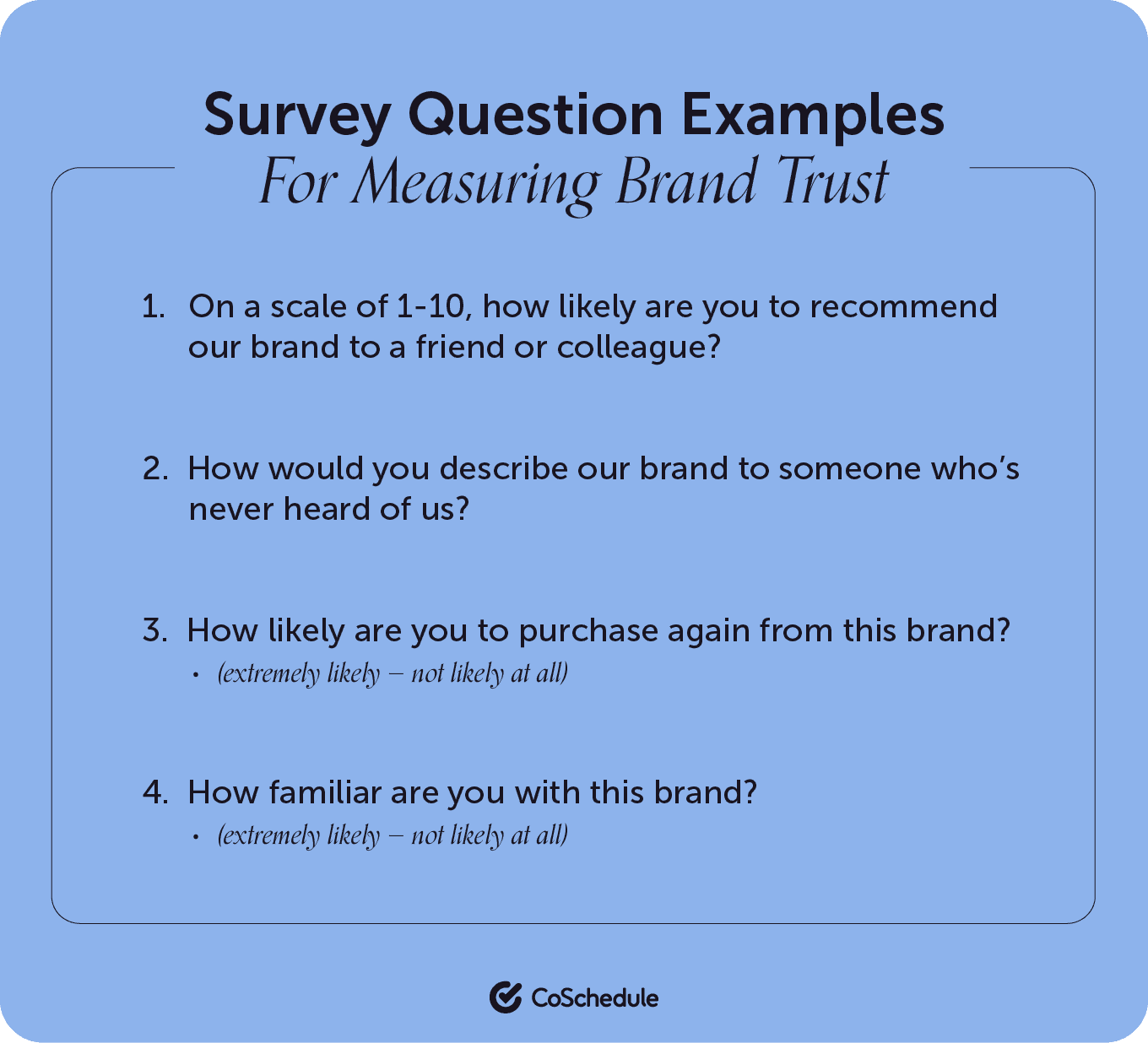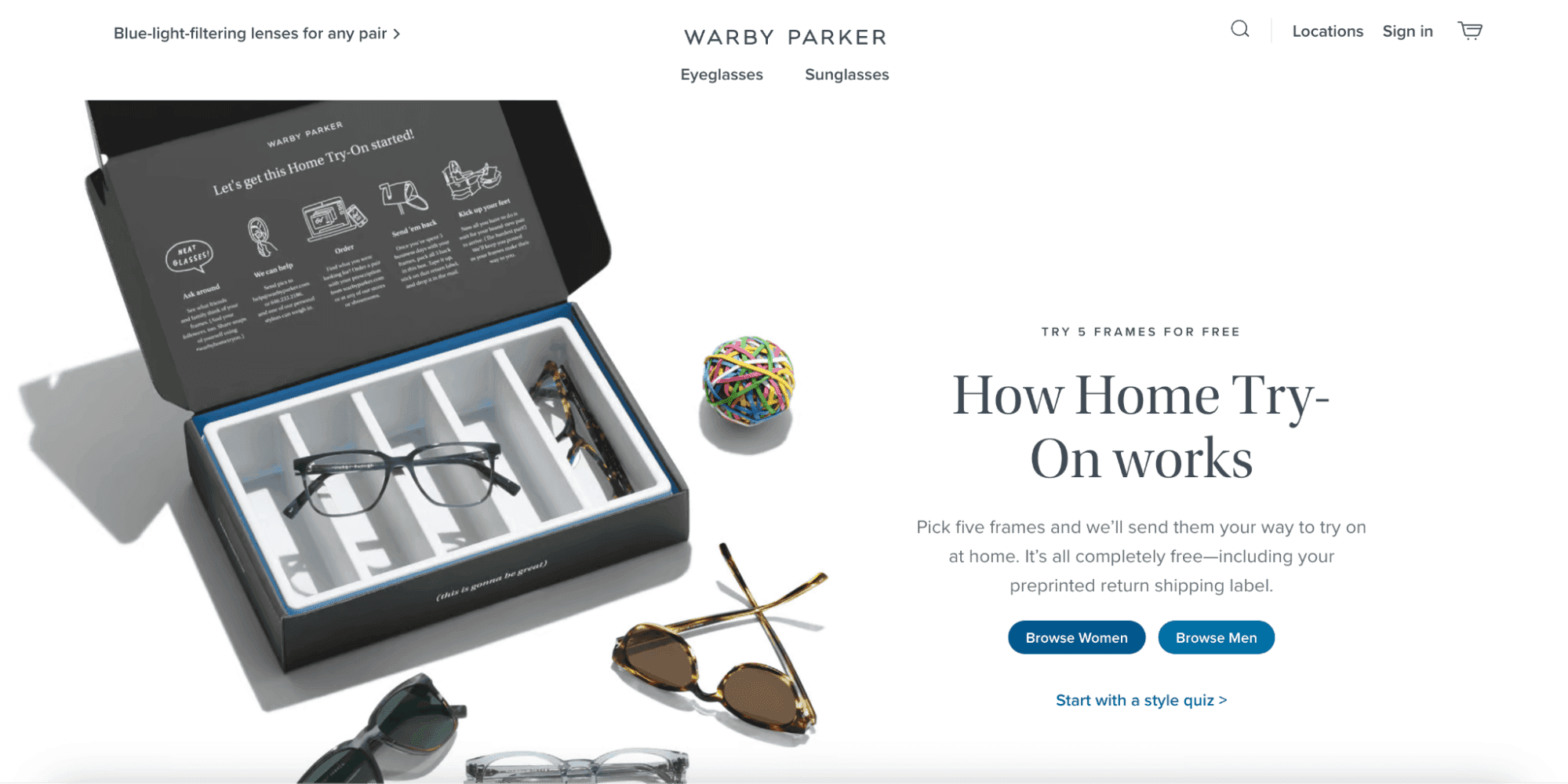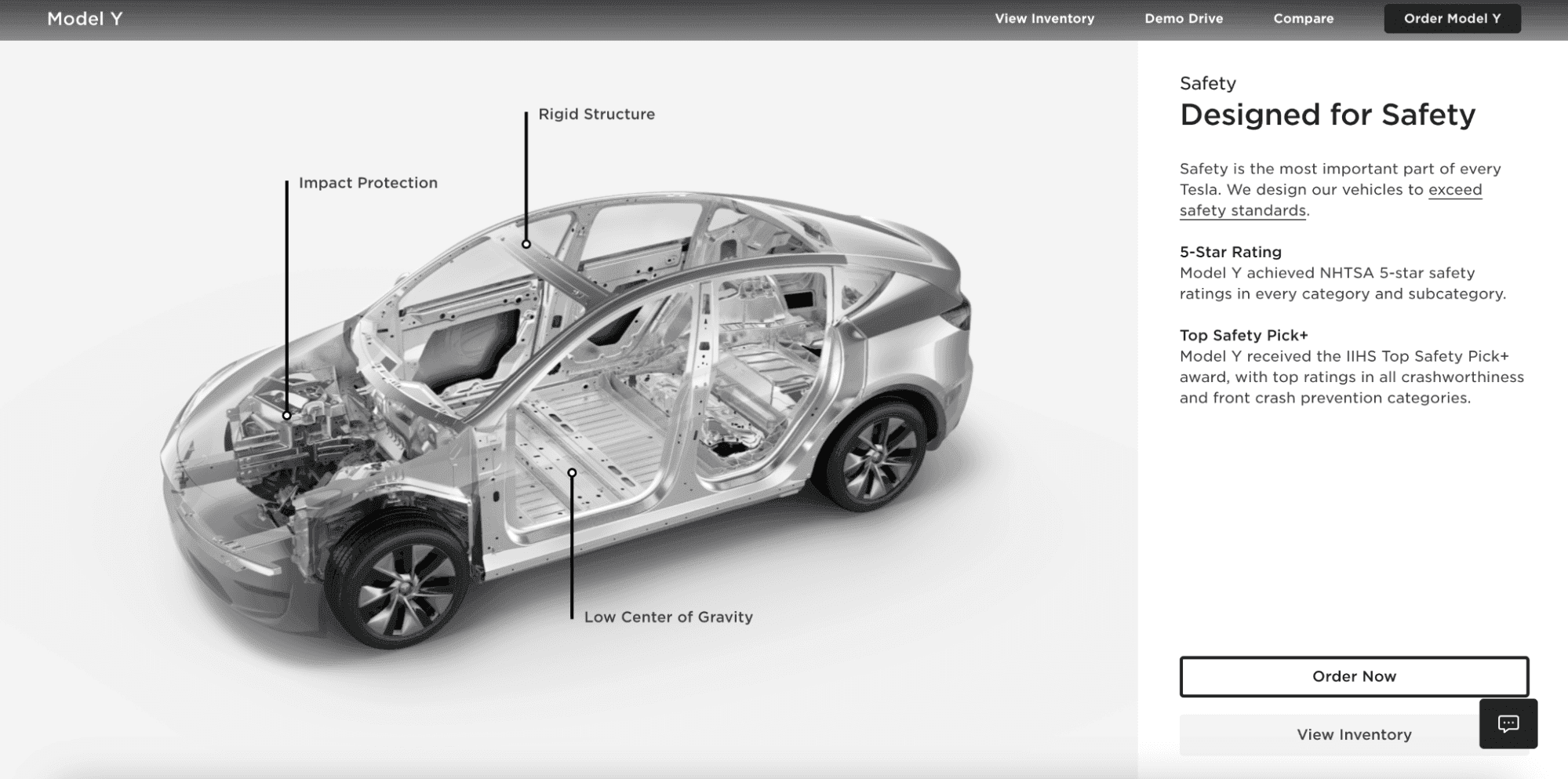Getting someone to trust your brand is a big ask.
In many cases, a business is a faceless entity in a sea of countless options, all vying for attention. Earning trust from customers means humanizing your brand, and consistently proving your worth. In general, it’s a byproduct of effective brand marketing.
That being said, in this post, we’ll uncover the factors that impact brand trust, some best practices to follow, and a couple of examples of brands that have justly earned the trust of their loyal customers.
What Is Brand Trust?
Brand Trust
Brand trust is the confidence and belief consumers acquire over time in a brand’s product or service.
It’s built upon the brand delivering a consistent, reliable, and high-quality experience that aligns with its promises and values. This trust permeates all aspects of a business, from product quality and customer service to ethical business practices and transparent communication.
What Is The Importance Of Brand Trust?
In the grand scheme of brand evolution, trust is the linchpin between brand recognition and brand loyalty.
It lays the groundwork for converting first-time customers, creating brand ambassadors, and driving repeat business.
At its core, brand trust is really about how much credibility you have. A credible and trusted brand is talked about between friends and families on the weekend, it’s shared on social media, and it’s got great reviews from genuinely happy customers.
Without credibility, trust can’t be established, leading to difficulties in attracting and retaining customers.
What Factors Impact Brand Trust?
Several critical factors come into play when considering the degree of trust customers place in a brand:
- Transparency: In the age of information, customers value businesses that are open and honest about their processes, products, and principles. Greater transparency leads to deeper trust.
- Consistency: Consistency in branding, messaging, and customer experience builds trust over time. When customers know what to expect, they’re more likely to keep coming back.
- Authenticity: Authenticity is no longer optional—it’s essential. Brands that stay true to their mission, values, and promise will win customers’ hearts and minds.
- Quality: The quality of a brand’s products or services have a direct bearing on trust. Subpar offerings erode trust, while excellent ones build it up.
- Communication: Regular, clear, and empathetic communication helps customers feel valued. Although chatbots and automated responses can streamline customer service, personalized communication from a real human still holds an unmatchable power in fostering trust.
- Responsiveness: Quick and effective responses to customer concerns show a brand’s commitment to their satisfaction, building trust in the process.
- Social Proof: Whether through reviews, testimonials, or influencer endorsements, social proof adds credibility and builds trust in those who haven’t yet made a purchase to take the leap.
How To Benefit From Brand Trust
Build Brand Trust
Here are ten steps to build brand trust:
- Define and Communicate Your Brand Values: Identify your core values and weave them into your brand’s narrative. These values should serve as a guiding light for your brand’s actions. Clothing company Everlane does an excellent job at this.
- Ensure Quality and Consistency: Maintain high standards across your product range and customer interactions. Your brand should be predictable in a good way.
- Foster Open Communication: Embrace transparency and foster a dialogue with your customers. Remember, listening is just as crucial as speaking.
- Be Responsive: Be quick to respond to queries, complaints, and reviews—positive or negative. Your availability reassures customers and signals that you value their feedback.
- Show Authenticity: Don’t just talk the talk—walk the walk. Consumers crave authenticity so ensure your actions reflect your brand’s ethos.
- Leverage Social Proof: Encourage customer testimonials and reviews. Their words will carry more weight than your own.
- Engage on Social Media: Use social media platforms not just to sell, but to engage, educate, and entertain. This will humanize your brand and foster deeper connections.
- Protect Customer Data: Prioritize data security and respect customers’ privacy. The fastest way to lose trust is through a data breach.
- Commit to Social Responsibility: Show commitment to social causes that align with your brand values. Brands that care for more than just profit tend to earn more trust.
Measure Brand Trust
Measuring brand trust isn’t an exact science.
It involves taking stock of your brand’s reputation, examining customer feedback, and scrutinizing loyalty metrics. These metrics tie in closely to how you would measure brand awareness.
Effective Tactics To Measure Brand Awareness
- Measure website traffic
- Study referral traffic
- Measure media value earned
- Track share of voice
- Use post-chat forms to survey customers
- Track high-DA (Domain authority) links
- Measure social media engagement
- Track customer reviews
- Use NPS (Net promoter score) surveys
- Track search performance in Google Analytics
- Track your targeting campaigns
Ultimately, conducting surveys, analyzing social media and website analytics, as well as tracking sales data will help determine whether a brand’s trust factor is moving in the right direction.
Survey Questions For Measuring Brand Trust
Surveys can provide you with an unfiltered view of how customers perceive your brand. Here are a few example questions to gauge brand trust:

Maintain & Improve Brand Trust
In order to keep growing as a company and attracting new customers, brand trust must be continuously built upon.
Where customer A might only need one positive interaction with a brand to compel a purchase, customer B might need nine. In fact, most customers need seven interactions with a brand before they decide to buy.
Therefore, it’s essential to provide consistent, positive experiences so that every time a customer interacts with your brand they feel more and more assured.
Best Practices In Building Brand Trust
Every brand’s trust-building journey will vary.
However, these three best practices can be applied to all brands seeking to enhance their trustworthiness.
Consistency Is Key
Consistent branding and messaging across all platforms is crucial. This ensures your brand is instantly recognizable.
Honesty Above All
Never compromise on truthfulness. Mistakes happen—own up to them and fix them. It will earn you respect and trust. President of Domino’s Pizza did just that in an apology video after two employees posted a YouTube clip that ended up damaging the Domino’s brand.
Customer-Centric Approach
Always put the customer first. Every decision should be guided by how it impacts your customer.
Examples Of Trusted Brands
Let’s explore some examples of brands that have successfully earned the trust of their customers.
Patagonia
Outdoor clothing brand Patagonia is known for its strong commitment to environmental conservation. By integrating its mission with its business model, it’s built a robust trust foundation with its loyal customers.
It donates a portion of its profits to environmental causes and its Worn Wear initiative encourages consumers to trade in and buy used, rather than purchase new gear—reinforcing its sustainable values.
Warby Parker
Warby Parker, an online eyewear retailer, has earned significant trust from its customers. And it shows as they’re a publicly traded company worth over one billion dollars.
They offer a free home try-on program, allowing customers to select five frames to test out for five days, free of charge.
This initiative not only prioritizes customer convenience but also demonstrates Warby Parker’s confidence in its products and commitment to customer satisfaction. Its Buy a Pair, Give a Pair program, which donates a pair of glasses for every pair sold, further builds customer trust by showing the company’s dedication to social causes.
Tesla
Electric vehicle manufacturer Tesla, has gained substantial trust from its customers thanks to its cutting-edge technology along with the fact that it’s rated one of the safest vehicles to drive.
Tesla’s mission “to accelerate the advent of sustainable transport” aligns well with consumers who prioritize environmental responsibility. This commitment to sustainability, coupled with the high-performance standards of its vehicles, helps reinforce the trust consumers place in the brand.




